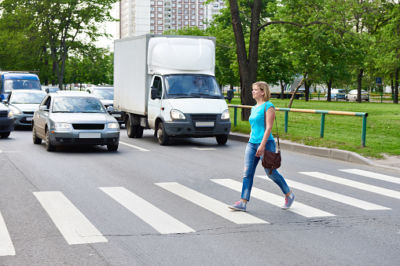


When warm weather hits, Michigan residents head outside. Whether they are walking, running, or biking, increased pedestrian and cyclist traffic can lead to fatal accidents. Preliminary reports from 2016 show that it was the deadliest year for pedestrians in decades. Whether you are on foot, or behind the wheel, find out what you can do to increase pedestrian safety this summer.
Recently, the Governors Highway Safety Association issued its annual Spotlight on Pedestrian Traffic Fatalities for 2016. The non-profit represents state and territorial highway safety offices to compile nationwide information about behavioral highway safety issues. This year's report is based on preliminary data for all 50 states and the District of Columbia.
The report found that fatal pedestrian accidents had increased 11% since 2015, with the total pedestrian fatalities. In fact, pedestrian accidents have been on the rise since 2009, when the number of reported deaths was just over 4,100. Between 2006 to 2015, pedestrian fatalities rose by 12%, topping out at 5,376. Now that number has jumped again, risking to 5,997 for 2016. That's 22% higher than the statistics for 2014. Among those accidents:
Pedestrian accidents also account for a higher percentage of motor vehicle deaths, rising from 11% in 2006 to 15% in 2015. This is in part because even though cars have gotten safer to drive, nothing protects a pedestrian from the impact of a collision. The faster the accident, the more likely the pedestrian involved will die. Melody Geraci, deputy executive director of the Active Transportation Alliance in Chicago, told NPR:
"Speed is a killer for sure," says Geraci. "If a pedestrian is struck at 20 miles an hour, they have a 10 percent chance of dying. If they are struck at 40 miles an hour, they have an 80 percent chance of dying."
Even when a pedestrian accident isn't fatal, an unprotected jogger or cyclist may experience serious, sometimes permanent disability that interferes with their lives and livelihoods.
The GHSA says that potential factors contributing to the increase in fatal pedestrian accidents include:
Much has been written about distracted driving. The increase in drivers' habit of texting while driving makes it more likely that accidents will happen, including pedestrian accidents. Drivers using smartphones or other devices may be unable to notice and react to a person crossing in front of their cars.
However, less has been said about distracted walking. Maureen Vogel, a spokesperson for GHSA, told NPR:
"We have noticed over the years increases in the number of injuries related to distracted walking — pedestrians being distracted by cellphones and then injuring themselves because of that distraction," says Vogel, referring to National Safety Council data. "So it's entirely possible that is at play, not just on our roadways but on our sidewalks."
In fact, Geraci said that "[a]fter speeding and the failure to yield, distractions are the number three cause [of pedestrian fatalities], particularly by electronic devices." She said, "We are crazy distracted."
The GHSA went beyond describing the problem. It also listed state-by-state efforts to reduce pedestrian and motor vehicle collisions. In Michigan, local municipalities use public education events and "Share the Road" messaging to promote pedestrian safety. The state's Pedestrian and Bicycle Action Team also provides shared information between state and local governments. In other parts of the country, efforts include:
Even without state or local government action, Michigan residents can help too. By committing to be distraction-free, drivers and walkers can increase their chances to spot a pedestrian accident before it happens. That will keep everyone safe and alive.
At Sachs Waldman, we have extensive experience helping pedestrian accident victims recover PIP benefits from no-fault insurance providers and file third-party negligence lawsuits against distracted drivers. We can help you get your damages covered. Contact our Detroit personal injury law office at 1-800-638-6722.
© 2025 Michigan Injury Attorneys
View Our Disclaimer | Privacy Policy
Detroit Personal Injury & Car Accident Attorneys